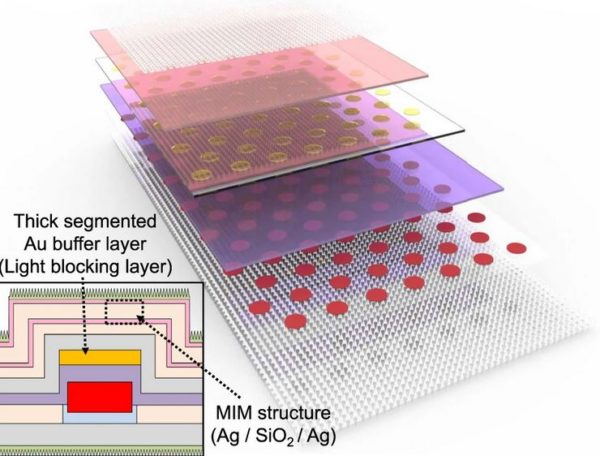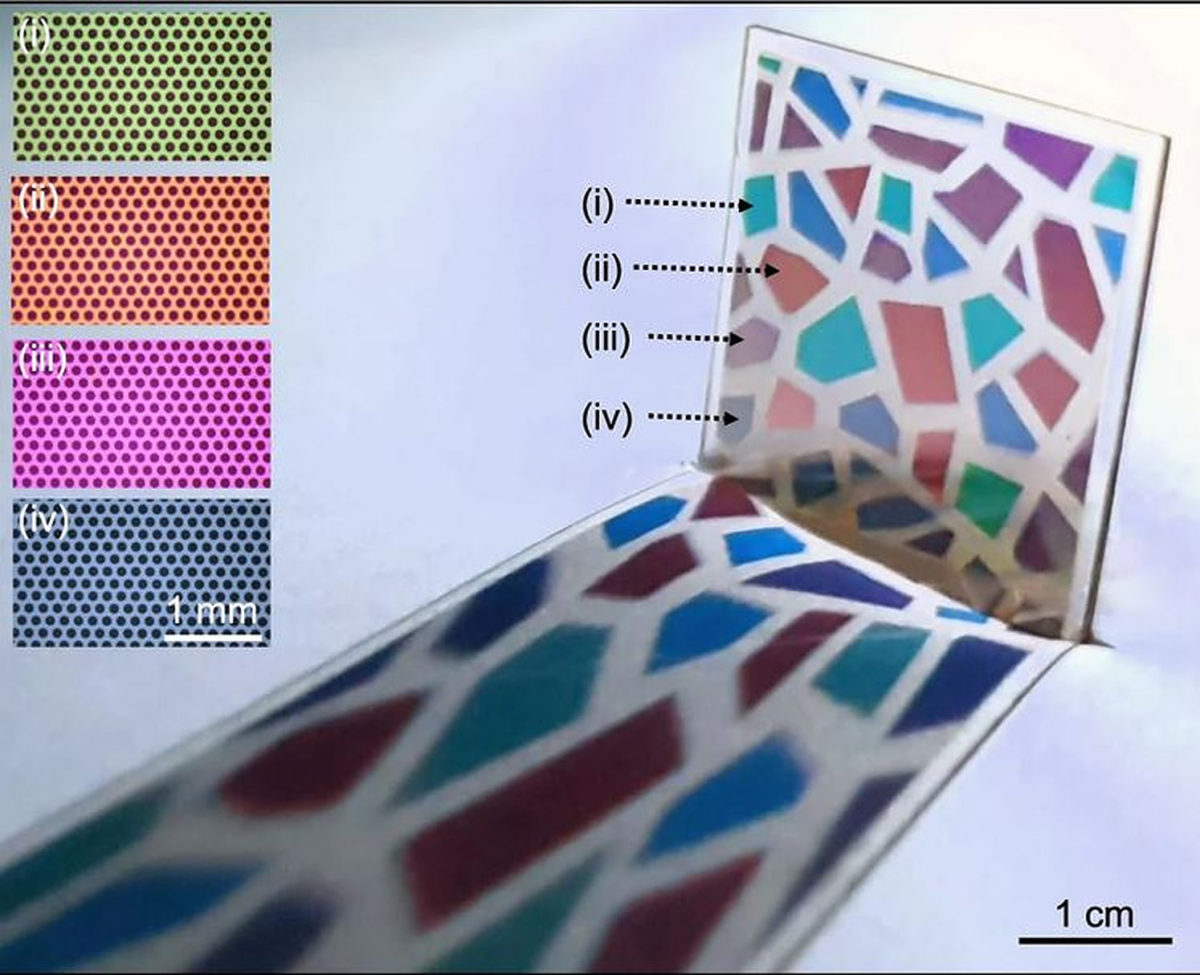Researchers in South Korea have developed perovskite microcells with a power conversion efficiency of 20.1% that can be used in colored solar windows.
The devices were built with a novel lift-off-based patterning approach based on swelling-induced crack propagation.
“The swelling-induced lift-off method allows the fabrication of a flat, uniform, crystalline, and patterned perovskite film without defects such as fracture or partial delamination,” the scientists explained. “In addition, the simultaneous lift-off patterning of the perovskite layer and electron transport layer (ETL) minimizes interfacial defects.”
In the process, the perovskite film was deposited by spin-coating on layers made of poly(methyl methacrylate) (PMMA) and polyimide (PI) that were prepatterned via oxygen plasma etching. A top silicon oxide (SiO2) layer is utilized as an etch stop layer for the dry etching of PMMA/PI layers and is finally wet-etched using a buffered oxide etchant (BOE).
After cracks propagate along the edge, the PI/perovskite layers are detached from the substrate without any fractures or partial delamination of the patterned films on the substrate.
“During the prepatterning of the PMMA/PI layers, the substrate becomes hydrophilic owing to oxygen plasma. Thus, the perovskite precursor can be spread over the entire substrate,” the scientists said, noting that this step allows the deposition of a perovskite film with a uniform thickness, a flat surface, and conformal coverage.

Image: Seoul National University, nature communications, Creative Commons License CC BY 4.0
The micro cell was built with an insulation layer deposited on the ETL to prevent a direct contact between the ETL and the hole transport layer (HTL (violet). The insulation layer was then patterned and etched to expose the ETL inside the microcell area. The perovskite layer was deposited and patterned after the deposition of the HTL and top electrode.
The scientists tested 458 perovskite microcells with a diameter of 100 μm and an electrode area of 9 mm2 and found that the champion device, under standard illumination conditions, the cell achieved an efficiency of 20.1%, an open-circuit voltage of 1.16 V, a short-circuit current density of 22.5 mA/cm2, and a fill factor of 77%. The microcells also showed a light utilization efficiency of 4.67 and a color rendering index of 97.5 %.
With this PV device, the researchers also built a first prototype of a solar window which they claim has vivid colors and high color purity. The window was fabricated with metal–insulator–metal structures and moth-eye-inspired nanostructures.
The microcell design is introduced in the paper Perovskite microcells fabricated using swelling-induced crack propagation for colored solar windows, which was recently published in nature communications. The research team includes academics from the Seoul National University, the Institute for Basic Science (IBS), and the Gwangju Institute of Science and Technology.
This content is protected by copyright and may not be reused. If you want to cooperate with us and would like to reuse some of our content, please contact: editors@pv-magazine.com.




1 comment
By submitting this form you agree to pv magazine using your data for the purposes of publishing your comment.
Your personal data will only be disclosed or otherwise transmitted to third parties for the purposes of spam filtering or if this is necessary for technical maintenance of the website. Any other transfer to third parties will not take place unless this is justified on the basis of applicable data protection regulations or if pv magazine is legally obliged to do so.
You may revoke this consent at any time with effect for the future, in which case your personal data will be deleted immediately. Otherwise, your data will be deleted if pv magazine has processed your request or the purpose of data storage is fulfilled.
Further information on data privacy can be found in our Data Protection Policy.